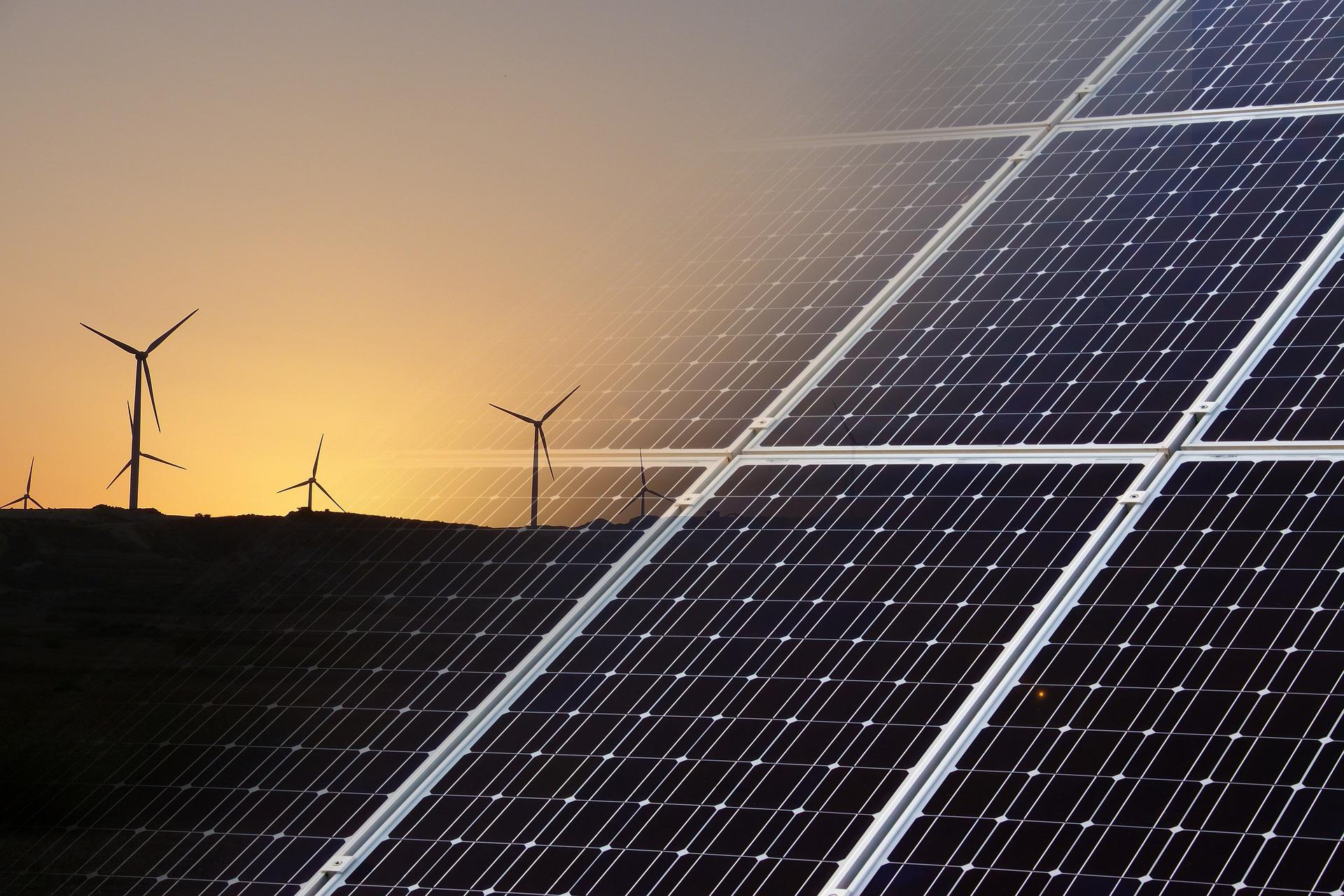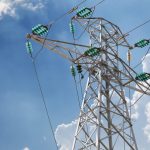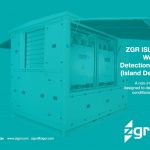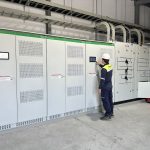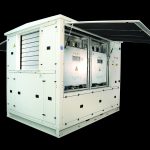Microgrids. In Europe, there is a gradual evolution from centralised generation systems to distributed generation systems, which provide increasing independence from the grid and improve efficiency and productivity.
The electricity consumption continues to grow steadily at a global level, despite rising prices over the last year. Moreover, electricity generated from sustainable sources is a key vector for decarbonisation and climate change mitigation. For all of these reasons, facing growing demand, electricity infrastructures need to continue to improving efficiency and developing energy production through renewable sources.
In order to respond to the electricity generation challenge ahead, we need to integrate more and more renewables into the system and bet for innovative models that allow us to adapt grids to the current context, which is tending to accelerate the electrification of the economy.
Microgrids, configured as small distribution systems capable of generating electricity and operating autonomously or connected to a larger grid, increase system efficiency.
If they are also accompanied by battery storage, they make possible to obtain energy in a regular and stable basis and become an optimal solution for the development of new distributed energy models.
Microgrids and energy self-sufficiency
Microgrids enable energy self-sufficiency because they emulate the operation of the general grid, but operate on a smaller scale and can also operate autonomously, allowing the user to generate their own electricity for use when it is most needed.
But unlike a centralised grid, a microgrid is generated at the same site or very close to where the energy is consumed, so we avoid the problems and costs of building and maintaining huge transmission lines. This maximizes the profitability of each kilowatt hour (kWh) generated.
At the same time, they make possible to balance the current mismatch between increasingly economical and in-demand renewable technologies and traditional energy markets with prices hitting maximum highs.
For all of the above reasons, microgrids are considered today as a solution to provide effective responses to various limiting scenarios that we have at the moment:
- The first of these has to do with the fact that current energy systems are not capable of covering the entire energy demand with renewables alone. Therefore, we need to combine different sources in the same energy infrastructure. This makes possible for us to provide response to the basic needs required, which are also growing exponentially as the economy becomes more digitalised. In our projects, for example, we combine energy from the general grid with photovoltaic solar energy.
- The second scenario is that we currently have the limitation to store large amounts of energy. This prevents a 100% renewable option from being possible yet. Therefore, we have to opt for flexible grids and choices, which allow for continuous readjustments in the system.
- Thirdly, the maximum production cycles of renewables do not always coincide with those of maximum demand, and solar, wind and other energy sources are not possible everywhere. For this reason, the battery storage systems and the control and management systems incorporated into the microgrid make possible to regulate and balance the supply and demand, and also guarantee supply at any time, to any user of the microgrid. This is also done in highly automated ways, through artificial intelligence, big data, advanced sensor technology and other emerging technologies.
Real applications of microgrids and distributed energy models
Think about industrial and residential energy communities. Also include new solutions for electric mobility and the necessary repowering of isolated service stations, in remote areas with little network coverage, but which need their facilities to provide a response to the electric car…
If we look at the new users and demanders of energy, we must focus on innovative service models, with microgrids and distributed storage.
Take, for example, industry, especially the intensive electrical power industry, which has long been demanding more decentralised and grid-independent energy models.
Its last generation produced equipment, automated and with advanced robotics, is extremely sensitive to electrical disturbances, so voltage dips, system failures or cyber-attacks on electrical infrastructures are very significant risks that affect its income results. But we must also add the actual context of energy crisis and a considerable increase in their production costs, with a reduction in marginal profits.
All these factors constitute a scenario for the development of these new models of industrial energy consumption based on multi-energy. These options make possible to reduce energy dependence on a single source, diversifying risks and gaining in efficiency. And all of this is reinforced and complemented by battery storage, which provides security and stability to the system.
Having a system of interconnected resources, giving service to large communities of consumers where the scale factor allows for profitability gains (industrial, residential, electric mobility, smart cities or other possible groups) is the type of model we are targeting.
Therefore, at ZGR we are already working in this direction because it is the future. As a leader in power electronics and storage technologies, we offer our customers our innovative developments.
We have examples and ongoing projects in:
- Microgrids for industrial energy communities.
- Microgrids for residential energy communities.
- Service stations in isolated areas with the potential to be converted into electric filling stations.
In these projects, we combine our photovoltaic solutions with hybrid battery storage equipment and our extensive experience in medium voltage, as support for electrical infrastructures and large distribution and transmission networks.
Our technical team provides design and engineering, so customers have solutions tailored to their infrastructure and their needs. In addition, we include our own technical service and maintenance.
Microgrids and distributed energy models: The necessary transformation of electricity substations
At the same time, we are also working with the major electricity distributors in Europe. Among other things, we are working to update their infrastructures. So that these large electricity grids, which are strategic for the areas, can be made flexible and also accommodate the microgrids connected to them, being able to withstand energy flows without collapse.
As our director of transmission and distribution, José Antonio Grande, points out: “The future is a network of microgrids. Distributed energy resources make it possible to decongest current electricity grids, making them more efficient and without energy losses associated with their transmission and distribution”.
Microgrids and distributed energy models are the best possible way forward for an integrated electricity supply. Moreover, aligned with the most recent European guidelines.
Eduardo Ibáñez, Director of Energy at ZGR Corporación, points out that: “We are living through an unprecedented structural change. Decentralisation has a lot to do with the decarbonisation of the energy system. And solar photovoltaic energy is a very important part of the solution in this distributed energy model”.
Definitely, the electrification of the economy is a clear commitment in Europe, which is also necessary for its energy self-sufficiency. At ZGR we are already working on this, because we want to be at the forefront and provide differential value to our customers.
ZGR Corporación, efficient, robust and highly productive solutions for the integrated management of electrical energy
At ZGR we value the energy produced for our customers. And we do this through our design capabilities based on modularity, in-house engineering and manufacturing.
We have the highest quality standards and stand out for our personalized technical service and our continuous search for partnerships to explore new business models based on the technologies we master.
The new solutions that address the need for improved efficiency to tackle the energy challenge. We want to meet the new demands of an increasingly electric future.
We contribute to improving the quality of electricity supply in a cost-effective way. And we facilitate the use of clean and sustainable energy.
We managed well the power electronic, the fundamental principles of electrical energy conversion and management. Our knowledge and experience allow us to align ourselves with our customers, whom we consider partners, and together develop global solutions, while maintaining our specialization.
You can also subscribe to our newsletter and follow us on LinkedIn, to keep up to date with our activity and industry trends in the electrical sector.
